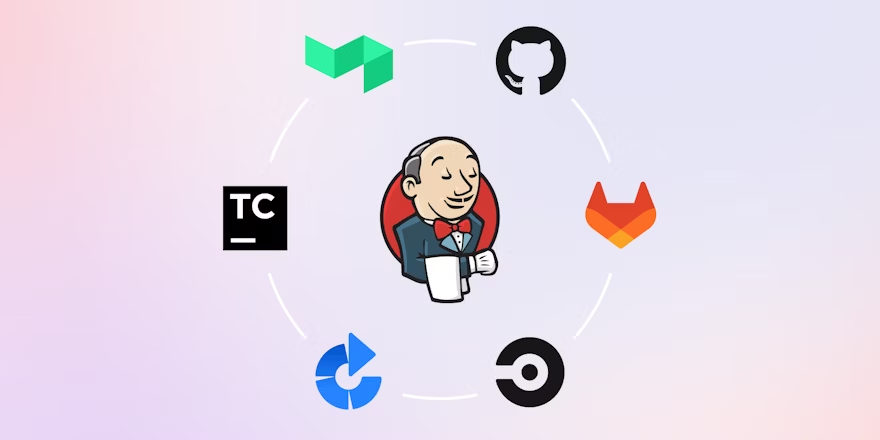Unmasking the Secrets of CI/CD: Jenkins, CircleCI, and GitLab CI
Understanding CI/CD Pipelines
CI/CD pipelines are the backbone of modern software development, automating the process from code commit to deployment. This automation drastically reduces the time and effort involved, improving speed, quality, and efficiency. A typical CI/CD pipeline includes:
- Continuous Integration (CI): Developers integrate their code changes frequently into a central repository. This triggers automated build and testing processes to identify integration issues early.
- Continuous Delivery (CD): Once CI ensures the code is stable, CD automates the release process. This involves packaging the code and deploying it to various environments (e.g., testing, staging, production).
- Continuous Deployment (often included in CD): The most advanced stage, where code changes automatically get deployed to production after passing all tests. This provides the fastest feedback loop.
The benefits of this automated approach are numerous: faster releases, reduced errors, improved collaboration, and enhanced developer productivity. CI/CD eliminates manual steps, which are prone to errors and delays. It provides a consistent and reliable way to build, test, and deploy software, leading to increased quality and faster time-to-market.
Imagine a team working on a large software project. Without CI/CD, merging code could become a nightmare, resulting in conflicts and broken builds. With CI/CD, each code commit triggers automated tests, identifying conflicts immediately. This allows developers to fix issues promptly, avoiding major problems later in the development cycle. This proactive approach ensures a higher quality product and faster delivery.
Key Players: Jenkins, CircleCI, and GitLab CI
Several powerful tools facilitate CI/CD, each with its strengths and weaknesses. Three prominent players are Jenkins, CircleCI, and GitLab CI.

Jenkins: The Veteran of CI/CD
Jenkins is an open-source automation server that has been a mainstay of CI/CD for years. Its longevity and extensive plugin ecosystem allow for high levels of customization. You can integrate Jenkins with almost any tool or service, giving you tremendous flexibility. However, its configuration can be complex, requiring significant technical expertise.
Jenkins' strength lies in its flexibility and community support. The vast array of plugins allows it to integrate with countless technologies. Whether you are using a specific testing framework, cloud provider, or deployment method, you’re likely to find a Jenkins plugin to support it. This extensive customization makes it suitable for even the most complex projects.
CircleCI: A Cloud-Native Approach
CircleCI is a cloud-based CI/CD platform that simplifies the setup and management of CI/CD pipelines. It offers a user-friendly interface and seamless integration with popular tools like GitHub and Bitbucket. While CircleCI provides less customization than Jenkins, its ease of use and speed make it a popular choice for many teams.
CircleCI’s cloud infrastructure handles the complexities of managing servers and infrastructure. This allows developers to focus on building software rather than managing servers. Its intuitive interface simplifies the creation and management of pipelines, making it accessible to developers with varying levels of experience. The pre-built integrations with other tools streamline the workflow significantly.
GitLab CI: Integrated and Streamlined
GitLab CI is another strong contender, tightly integrated with the GitLab platform. This integration simplifies the entire development workflow, making it a streamlined solution for teams using GitLab. Like CircleCI, it prioritizes ease of use while still offering robust capabilities.
GitLab CI’s seamless integration with GitLab’s other features, such as issue tracking and code review, provide a unified development environment. This eliminates the need to switch between multiple tools, improving workflow and team collaboration. The platform provides detailed insights into pipeline performance, helping developers optimize their processes and identify areas for improvement. This level of integration is particularly attractive for teams that already heavily utilize GitLab.
Choosing the Right CI/CD Tool
The best CI/CD tool depends on your project's specific needs and your team's expertise. Consider the following factors:
- Project size and complexity: Larger and more complex projects might benefit from the customization of Jenkins, while smaller projects might find CircleCI or GitLab CI simpler to use.
- Team expertise: Choose a tool that your team is comfortable using and can effectively maintain.
- Integration with other tools: Ensure the CI/CD tool integrates seamlessly with your existing development tools and infrastructure.
- Cost: Consider the pricing models of different platforms, taking into account both upfront and ongoing costs.
Ultimately, the goal is to find a CI/CD solution that streamlines your software development process, improving speed, quality, and collaboration. By thoughtfully evaluating your requirements and the capabilities of various CI/CD tools, you can create a robust and efficient pipeline that accelerates your software delivery and helps your team reach its full potential.
The image below illustrates a typical CI/CD pipeline: [AI-generated image: Prompt: “A flowchart illustrating a typical CI/CD pipeline, showing stages like code commit, build, test, deploy, and feedback.”]
In conclusion, CI/CD tools are essential for modern software development, automating the process and boosting efficiency. Jenkins, CircleCI, and GitLab CI each offer unique advantages, making it vital to select the tool that best aligns with your team’s specific needs and resources.